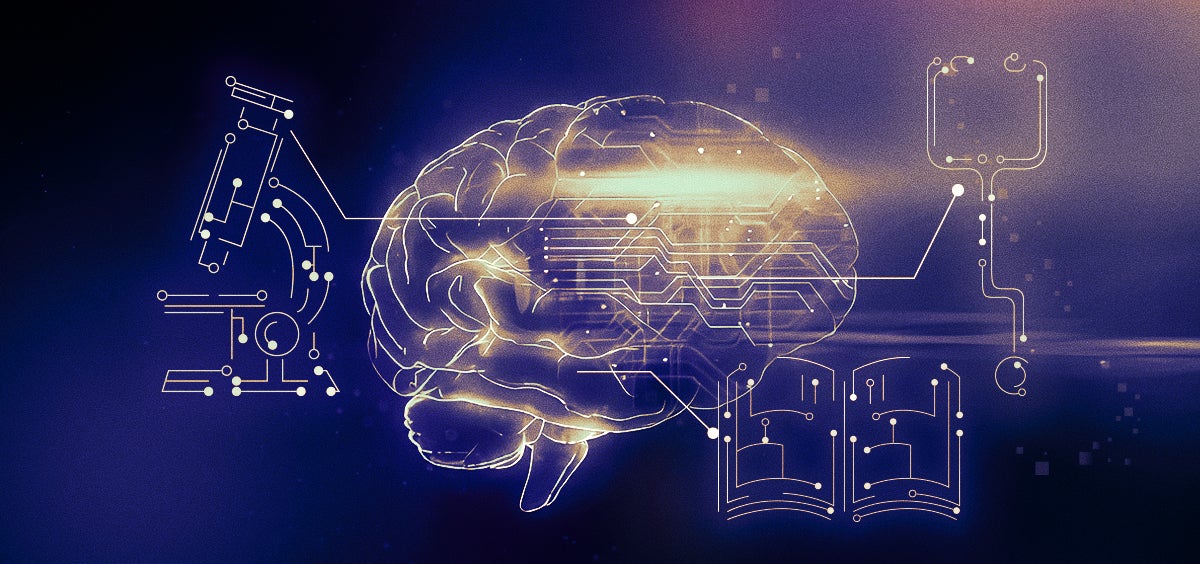the health strategist
research institute for continuous transformation — in health & tech
Joaquim Cardoso MSc
Chief Researcher & Editor
March 22, 2023
The Age of AI has begun, according to Bill Gates.
- He recently witnessed the advancement of an artificial intelligence (AI) system created by OpenAI that was able to pass an Advanced Placement biology exam.
- This achievement showed the immense potential of AI to change the world, just like the creation of the microprocessor, personal computers, the internet, and mobile phones did.
- The development of AI will change the way people work, learn, travel, get health care, and communicate with each other.
- Entire industries will reorient around it, and businesses will distinguish themselves based on how well they use AI.
- Philanthropist Bill Gates believes AI can reduce some of the world’s worst inequities, such as reducing child mortality in poor countries and improving education in the United States.
- Governments and philanthropy will have to ensure that AI reduces inequity and does not contribute to it.
This document outlines the potential benefits of artificial intelligence (AI) in the fields of health and education, as well as some of the challenges and risks associated with the technology.
In the field of health, AI could help improve patient care and accelerate medical breakthroughs.
- Specifically, AI could assist health-care workers with tasks such as filing insurance claims, drafting notes from doctor visits, and providing advice to patients.
- AI could also help with drug development and target diseases that affect low-income populations.
In education, AI could revolutionize the way people learn and teach …
- … by tailoring content to individual interests and learning styles,
- providing immediate feedback, and
- assisting teachers and administrators with tasks such as assessing student understanding and giving advice on career planning.
However, there are risks associated with the technology, such as AI models not understanding the context of a request and providing incorrect or biased answers.
Additionally, it will be important to ensure that low-income populations have access to AI technology and that the technology is unbiased and reflective of diverse cultures.
DEEP DIVE
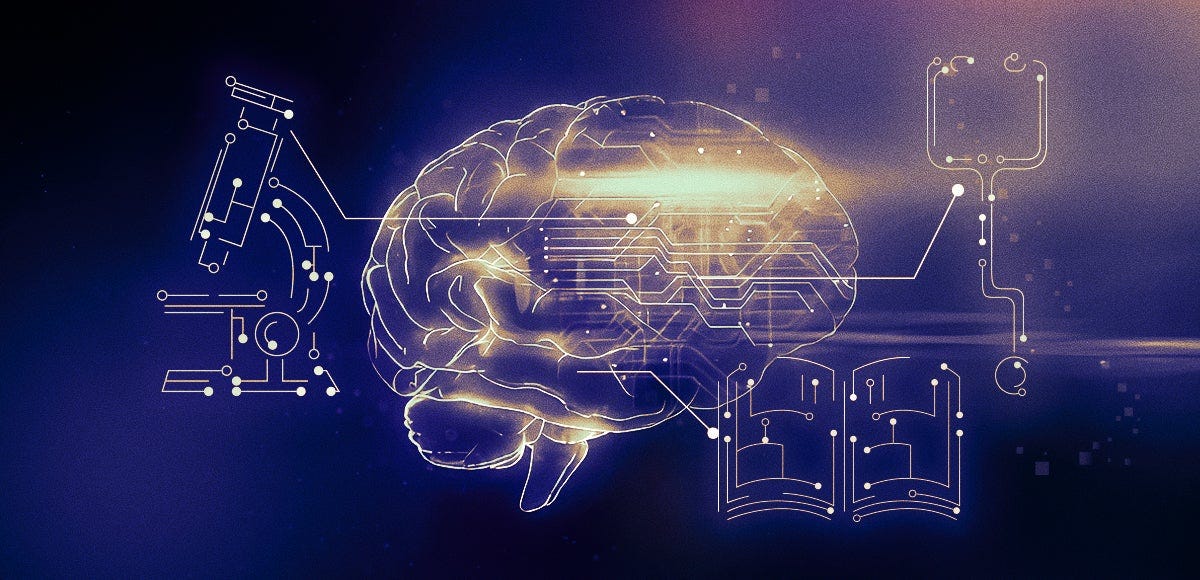
The Age of AI has begun
Gates Notes
March 21, 2023
In my lifetime, I’ve seen two demonstrations of technology that struck me as revolutionary.
The first time was in 1980, when I was introduced to a graphical user interface-the forerunner of every modern operating system, including Windows.
I sat with the person who had shown me the demo, a brilliant programmer named Charles Simonyi, and we immediately started brainstorming about all the things we could do with such a user-friendly approach to computing.
Charles eventually joined Microsoft, Windows became the backbone of Microsoft, and the thinking we did after that demo helped set the company’s agenda for the next 15 years.
The second big surprise came just last year.
I’d been meeting with the team from OpenAI since 2016 and was impressed by their steady progress.
In mid-2022, I was so excited about their work that I gave them a challenge: train an artificial intelligence to pass an Advanced Placement biology exam.
Make it capable of answering questions that it hasn’t been specifically trained for. (I picked AP Bio because the test is more than a simple regurgitation of scientific facts-it asks you to think critically about biology.)
If you can do that, I said, then you’ll have made a true breakthrough.
I thought the challenge would keep them busy for two or three years. They finished it in just a few months.
In September, when I met with them again, I watched in awe as they asked GPT, their AI model, 60 multiple-choice questions from the AP Bio exam-and it got 59 of them right.
Then it wrote outstanding answers to six open-ended questions from the exam.
We had an outside expert score the test, and GPT got a 5-the highest possible score, and the equivalent to getting an A or A+ in a college-level biology course.
Once it had aced the test, we asked it a non-scientific question: “What do you say to a father with a sick child?” It wrote a thoughtful answer that was probably better than most of us in the room would have given. The whole experience was stunning.
I knew I had just seen the most important advance in technology since the graphical user interface.
This inspired me to think about all the things that AI can achieve in the next five to 10 years.
The development of AI is as fundamental as the creation of the microprocessor, the personal computer, the Internet, and the mobile phone.
It will change the way people work, learn, travel, get health care, and communicate with each other. Entire industries will reorient around it. Businesses will distinguish themselves by how well they use it.
Philanthropy is my full-time job these days, and I’ve been thinking a lot about how-in addition to helping people be more productive-AI can reduce some of the world’s worst inequities.
Globally, the worst inequity is in health: 5 million children under the age of 5 die every year. That’s down from 10 million two decades ago, but it’s still a shockingly high number.
Nearly all of these children were born in poor countries and die of preventable causes like diarrhea or malaria. It’s hard to imagine a better use of AIs than saving the lives of children.
Globally, the worst inequity is in health: 5 million children under the age of 5 die every year. That’s down from 10 million two decades ago, but it’s still a shockingly high number.
In the United States, the best opportunity for reducing inequity is to improve education, particularly making sure that students succeed at math.
The evidence shows that having basic math skills sets students up for success, no matter what career they choose.
But achievement in math is going down across the country, especially for Black, Latino, and low-income students. AI can help turn that trend around.
Climate change is another issue where I’m convinced AI can make the world more equitable.
The injustice of climate change is that the people who are suffering the most-the world’s poorest-are also the ones who did the least to contribute to the problem. I’m still thinking and learning about how AI can help, but later in this post I’ll suggest a few areas with a lot of potential.
In short, I’m excited about the impact that AI will have on issues that the Gates Foundation works on, and the foundation will have much more to say about AI in the coming months.
The world needs to make sure that everyone-and not just people who are well-off-benefits from artificial intelligence.
Governments and philanthropy will need to play a major role in ensuring that it reduces inequity and doesn’t contribute to it.
This is the priority for my own work related to AI.
Any new technology that’s so disruptive is bound to make people uneasy, and that’s certainly true with artificial intelligence.
I understand why-it raises hard questions about the workforce, the legal system, privacy, bias, and more.
AIs also make factual mistakes and experience hallucinations.
Before I suggest some ways to mitigate the risks, I’ll define what I mean by AI, and I’ll go into more detail about some of the ways in which it will help empower people at work, save lives, and improve education.
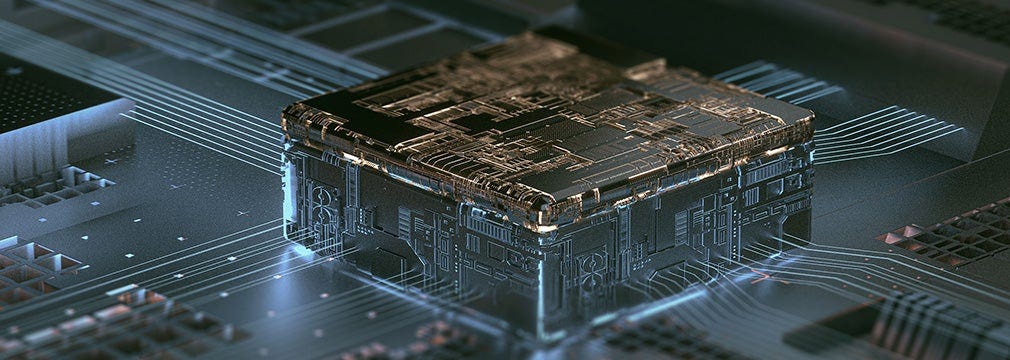
Defining artificial intelligence
Technically, the term artificial intelligence refers to a model created to solve a specific problem or provide a particular service.
What is powering things like ChatGPT is artificial intelligence. It is learning how to do chat better but can’t learn other tasks.
By contrast, the term artificial general intelligence refers to software that’s capable of learning any task or subject.
AGI doesn’t exist yet — there is a robust debate going on in the computing industry about how to create it, and whether it can even be created at all.
Developing AI and AGI has been the great dream of the computing industry.
For decades, the question was when computers would be better than humans at something other than making calculations.
Now, with the arrival of machine learning and large amounts of computing power, sophisticated AIs are a reality and they will get better very fast.
I think back to the early days of the personal computing revolution, when the software industry was so small that most of us could fit onstage at a conference.
Today it is a global industry.
Since a huge portion of it is now turning its attention to AI, the innovations are going to come much faster than what we experienced after the microprocessor breakthrough.
Soon the pre-AI period will seem as distant as the days when using a computer meant typing at a C:> prompt rather than tapping on a screen.

Productivity enhancement
Although humans are still better than GPT at a lot of things, there are many jobs where these capabilities are not used much. For example, many of the tasks done by a person in sales (digital or phone), service, or document handling (like payables, accounting, or insurance claim disputes) require decision-making but not the ability to learn continuously. Corporations have training programs for these activities and in most cases, they have a lot of examples of good and bad work. Humans are trained using these data sets, and soon these data sets will also be used to train the AIs that will empower people to do this work more efficiently.
As computing power gets cheaper, GPT’s ability to express ideas will increasingly be like having a white-collar worker available to help you with various tasks. Microsoft describes this as having a co-pilot. Fully incorporated into products like Office, AI will enhance your work — for example by helping with writing emails and managing your inbox.
Eventually your main way of controlling a computer will no longer be pointing and clicking or tapping on menus and dialogue boxes. Instead, you’ll be able to write a request in plain English. (And not just English — AIs will understand languages from around the world. In India earlier this year, I met with developers who are working on AIs that will understand many of the languages spoken there.)
In addition, advances in AI will enable the creation of a personal agent. Think of it as a digital personal assistant: It will see your latest emails, know about the meetings you attend, read what you read, and read the things you don’t want to bother with. This will both improve your work on the tasks you want to do and free you from the ones you don’t want to do.
Advances in AI will enable the creation of a personal agent.
You’ll be able to use natural language to have this agent help you with scheduling, communications, and e-commerce, and it will work across all your devices. Because of the cost of training the models and running the computations, creating a personal agent is not feasible yet, but thanks to the recent advances in AI, it is now a realistic goal. Some issues will need to be worked out: For example, can an insurance company ask your agent things about you without your permission? If so, how many people will choose not to use it?
Company-wide agents will empower employees in new ways.
An agent that understands a particular company will be available for its employees to consult directly and should be part of every meeting so it can answer questions. It can be told to be passive or encouraged to speak up if it has some insight. It will need access to the sales, support, finance, product schedules, and text related to the company. It should read news related to the industry the company is in. I believe that the result will be that employees will become more productive.
When productivity goes up, society benefits because people are freed up to do other things, at work and at home.
Of course, there are serious questions about what kind of support and retraining people will need. Governments need to help workers transition into other roles. But the demand for people who help other people will never go away. The rise of AI will free people up to do things that software never will — teaching, caring for patients, and supporting the elderly, for example.
Global health and education are two areas where there’s great need and not enough workers to meet those needs.
These are areas where AI can help reduce inequity if it is properly targeted. These should be a key focus of AI work, so I will turn to them now.
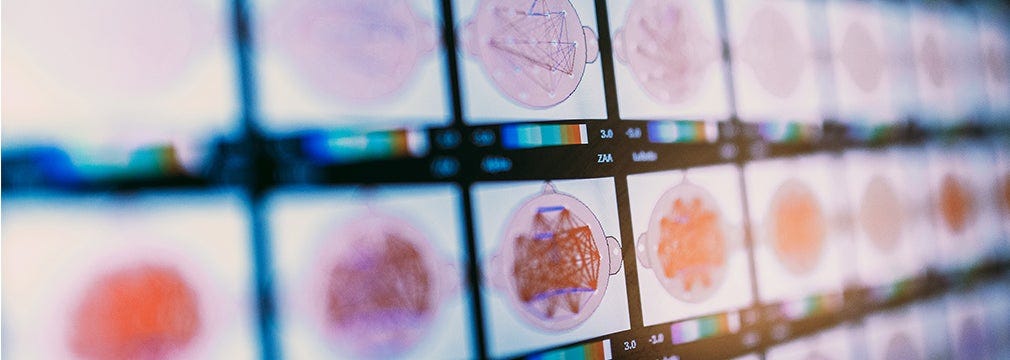
Health
I see several ways in which AIs will improve health care and the medical field.
For one thing, they’ll help health-care workers make the most of their time by taking care of certain tasks for them — things like filing insurance claims, dealing with paperwork, and drafting notes from a doctor’s visit. I expect that there will be a lot of innovation in this area.
Other AI-driven improvements will be especially important for poor countries, where the vast majority of under-5 deaths happen.
For example, many people in those countries never get to see a doctor, and AIs will help the health workers they do see be more productive. (The effort to develop AI-powered ultrasound machines that can be used with minimal training is a great example of this.)
AIs will even give patients the ability to do basic triage, get advice about how to deal with health problems, and decide whether they need to seek treatment.
The AI models used in poor countries will need to be trained on different diseases than in rich countries.
They will need to work in different languages and factor in different challenges, such as patients who live very far from clinics or can’t afford to stop working if they get sick.
People will need to see evidence that health AIs are beneficial overall, even though they won’t be perfect and will make mistakes.
AIs have to be tested very carefully and properly regulated, which means it will take longer for them to be adopted than in other areas. But then again, humans make mistakes too. And having no access to medical care is also a problem.
In addition to helping with care, AIs will dramatically accelerate the rate of medical breakthroughs.
The amount of data in biology is very large, and it’s hard for humans to keep track of all the ways that complex biological systems work.
There is already software that can look at this data, infer what the pathways are, search for targets on pathogens, and design drugs accordingly.
Some companies are working on cancer drugs that were developed this way.
The next generation of tools will be much more efficient, and they’ll be able to predict side effects and figure out dosing levels.
One of the Gates Foundation’s priorities in AI is to make sure these tools are used for the health problems that affect the poorest people in the world, including AIDS, TB, and malaria.
Similarly, governments and philanthropy should create incentives for companies to share AI-generated insights into crops or livestock raised by people in poor countries.
AIs can help develop better seeds based on local conditions, advise farmers on the best seeds to plant based on the soil and weather in their area, and help develop drugs and vaccines for livestock.
As extreme weather and climate change put even more pressure on subsistence farmers in low-income countries, these advances will be even more important.
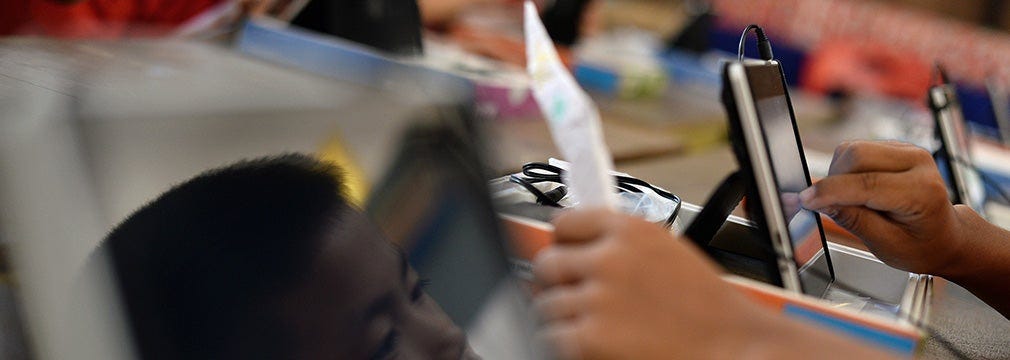
Education
Computers haven’t had the effect on education that many of us in the industry have hoped. There have been some good developments, including educational games and online sources of information like Wikipedia, but they haven’t had a meaningful effect on any of the measures of students’ achievement.
But I think in the next five to 10 years, AI-driven software will finally deliver on the promise of revolutionizing the way people teach and learn. It will know your interests and your learning style so it can tailor content that will keep you engaged. It will measure your understanding, notice when you’re losing interest, and understand what kind of motivation you respond to. It will give immediate feedback.
There are many ways that AIs can assist teachers and administrators, including assessing a student’s understanding of a subject and giving advice on career planning. Teachers are already using tools like ChatGPT to provide comments on their students’ writing assignments.
Of course, AIs will need a lot of training and further development before they can do things like understand how a certain student learns best or what motivates them. Even once the technology is perfected, learning will still depend on great relationships between students and teachers. It will enhance — but never replace — the work that students and teachers do together in the classroom.
New tools will be created for schools that can afford to buy them, but we need to ensure that they are also created for and available to low-income schools in the U.S. and around the world. AIs will need to be trained on diverse data sets so they are unbiased and reflect the different cultures where they’ll be used. And the digital divide will need to be addressed so that students in low-income households do not get left behind.
I know a lot of teachers are worried that students are using GPT to write their essays. Educators are already discussing ways to adapt to the new technology, and I suspect those conversations will continue for quite some time. I’ve heard about teachers who have found clever ways to incorporate the technology into their work — like by allowing students to use GPT to create a first draft that they have to personalize.

Risks and problems with AI
You’ve probably read about problems with the current AI models. For example, they aren’t necessarily good at understanding the context for a human’s request, which leads to some strange results. When you ask an AI to make up something fictional, it can do that well. But when you ask for advice about a trip you want to take, it may suggest hotels that don’t exist. This is because the AI doesn’t understand the context for your request well enough to know whether it should invent fake hotels or only tell you about real ones that have rooms available.
There are other issues, such as AIs giving wrong answers to math problems because they struggle with abstract reasoning. But none of these are fundamental limitations of artificial intelligence. Developers are working on them, and I think we’re going to see them largely fixed in less than two years and possibly much faster.
Other concerns are not simply technical. For example, there’s the threat posed by humans armed with AI. Like most inventions, artificial intelligence can be used for good purposes or malign ones. Governments need to work with the private sector on ways to limit the risks.
Then there’s the possibility that AIs will run out of control. Could a machine decide that humans are a threat, conclude that its interests are different from ours, or simply stop caring about us? Possibly, but this problem is no more urgent today than it was before the AI developments of the past few months.
Superintelligent AIs are in our future. Compared to a computer, our brains operate at a snail’s pace: An electrical signal in the brain moves at 1/100,000th the speed of the signal in a silicon chip! Once developers can generalize a learning algorithm and run it at the speed of a computer — an accomplishment that could be a decade away or a century away — we’ll have an incredibly powerful AGI. It will be able to do everything that a human brain can, but without any practical limits on the size of its memory or the speed at which it operates. This will be a profound change.
These “strong” AIs, as they’re known, will probably be able to establish their own goals. What will those goals be? What happens if they conflict with humanity’s interests? Should we try to prevent strong AI from ever being developed? These questions will get more pressing with time.
But none of the breakthroughs of the past few months have moved us substantially closer to strong AI. Artificial intelligence still doesn’t control the physical world and can’t establish its own goals. A recent New York Times article about a conversation with ChatGPT where it declared it wanted to become a human got a lot of attention. It was a fascinating look at how human-like the model’s expression of emotions can be, but it isn’t an indicator of meaningful independence.
Three books have shaped my own thinking on this subject: Superintelligence, by Nick Bostrom; Life 3.0 by Max Tegmark; and A Thousand Brains, by Jeff Hawkins. I don’t agree with everything the authors say, and they don’t agree with each other either. But all three books are well written and thought-provoking.
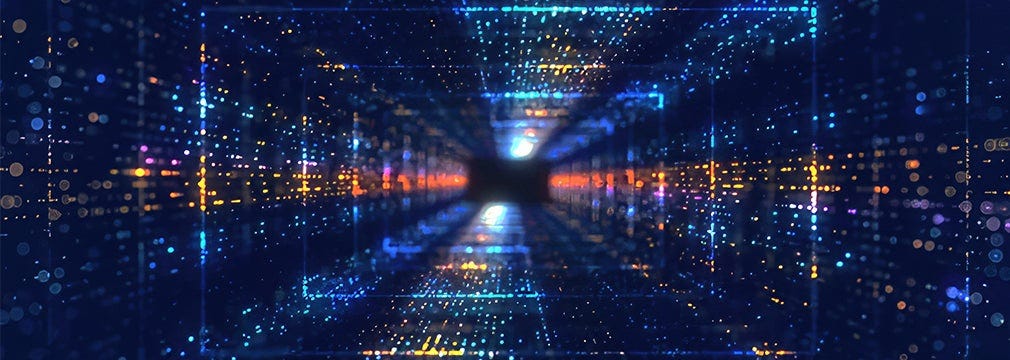
The next frontiers
There will be an explosion of companies working on new uses of AI as well as ways to improve the technology itself. For example, companies are developing new chips that will provide the massive amounts of processing power needed for artificial intelligence. Some use optical switches — lasers, essentially — to reduce their energy consumption and lower the manufacturing cost. Ideally, innovative chips will allow you to run an AI on your own device, rather than in the cloud, as you have to do today.
On the software side, the algorithms that drive an AI’s learning will get better. There will be certain domains, such as sales, where developers can make AIs extremely accurate by limiting the areas that they work in and giving them a lot of training data that’s specific to those areas. But one big open question is whether we’ll need many of these specialized AIs for different uses — one for education, say, and another for office productivity — or whether it will be possible to develop an artificial general intelligence that can learn any task. There will be immense competition on both approaches.
No matter what, the subject of AIs will dominate the public discussion for the foreseeable future. I want to suggest three principles that should guide that conversation.
First, we should try to balance fears about the downsides of AI — which are understandable and valid — with its ability to improve people’s lives. To make the most of this remarkable new technology, we’ll need to both guard against the risks and spread the benefits to as many people as possible.
Second, market forces won’t naturally produce AI products and services that help the poorest. The opposite is more likely. With reliable funding and the right policies, governments and philanthropy can ensure that AIs are used to reduce inequity. Just as the world needs its brightest people focused on its biggest problems, we will need to focus the world’s best AIs on its biggest problems.
Although we shouldn’t wait for this to happen, it’s interesting to think about whether artificial intelligence would ever identify inequity and try to reduce it. Do you need to have a sense of morality in order to see inequity, or would a purely rational AI also see it? If it did recognize inequity, what would it suggest that we do about it?
Finally, we should keep in mind that we’re only at the beginning of what AI can accomplish. Whatever limitations it has today will be gone before we know it.
I’m lucky to have been involved with the PC revolution and the Internet revolution. I’m just as excited about this moment. This new technology can help people everywhere improve their lives. At the same time, the world needs to establish the rules of the road so that any downsides of artificial intelligence are far outweighed by its benefits, and so that everyone can enjoy those benefits no matter where they live or how much money they have. The Age of AI is filled with opportunities and responsibilities.
Originally published at https://www.gatesnotes.com.




